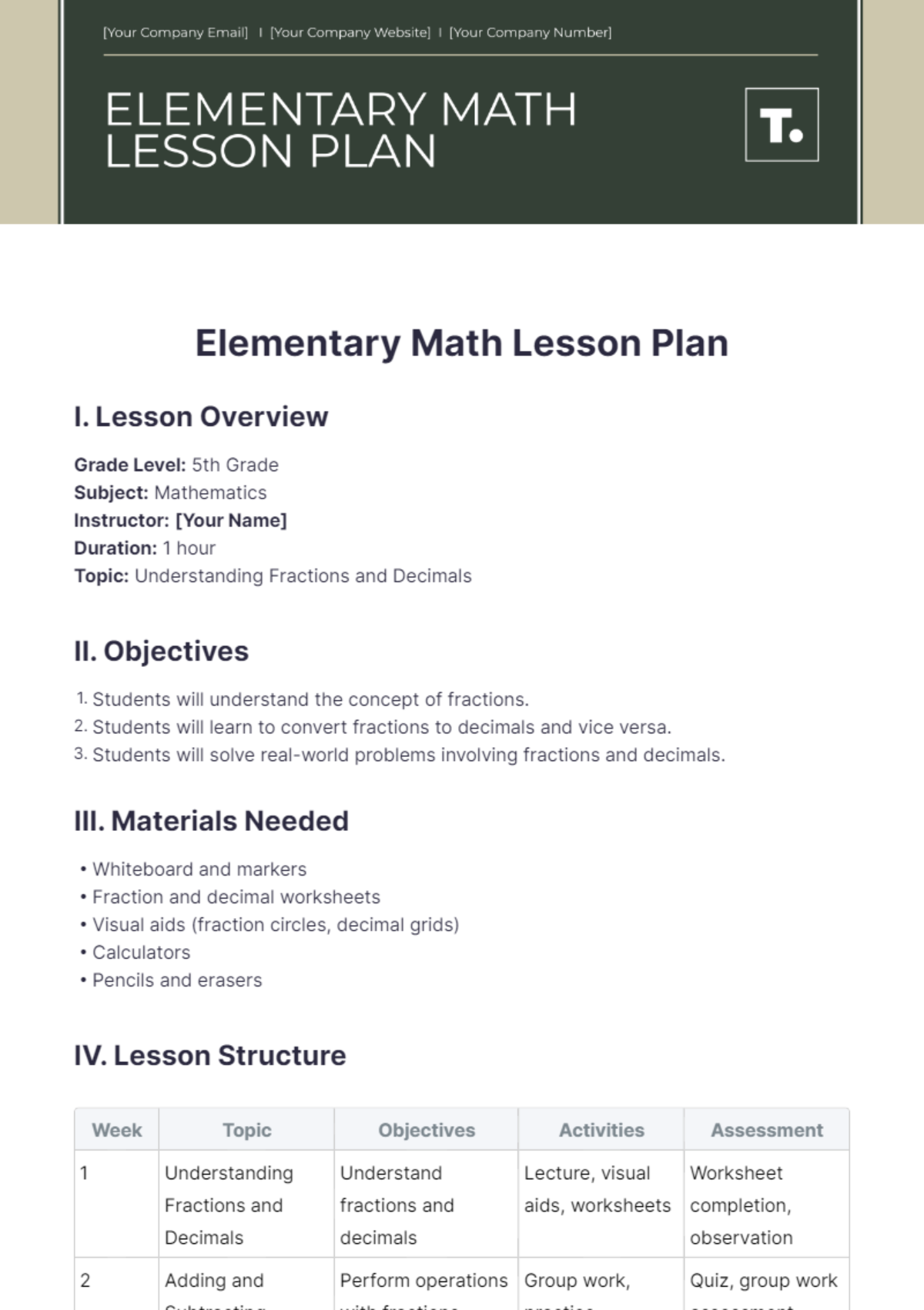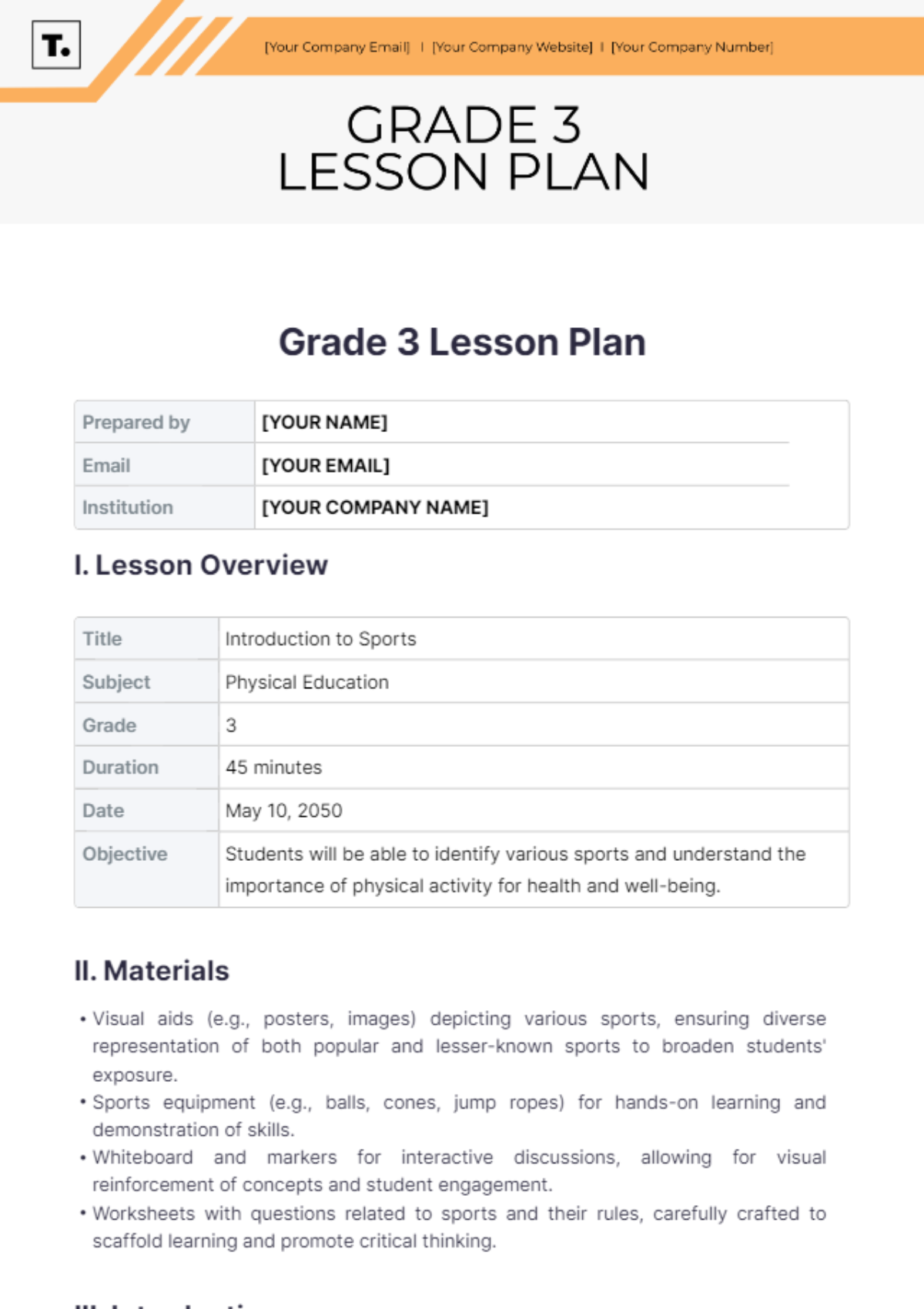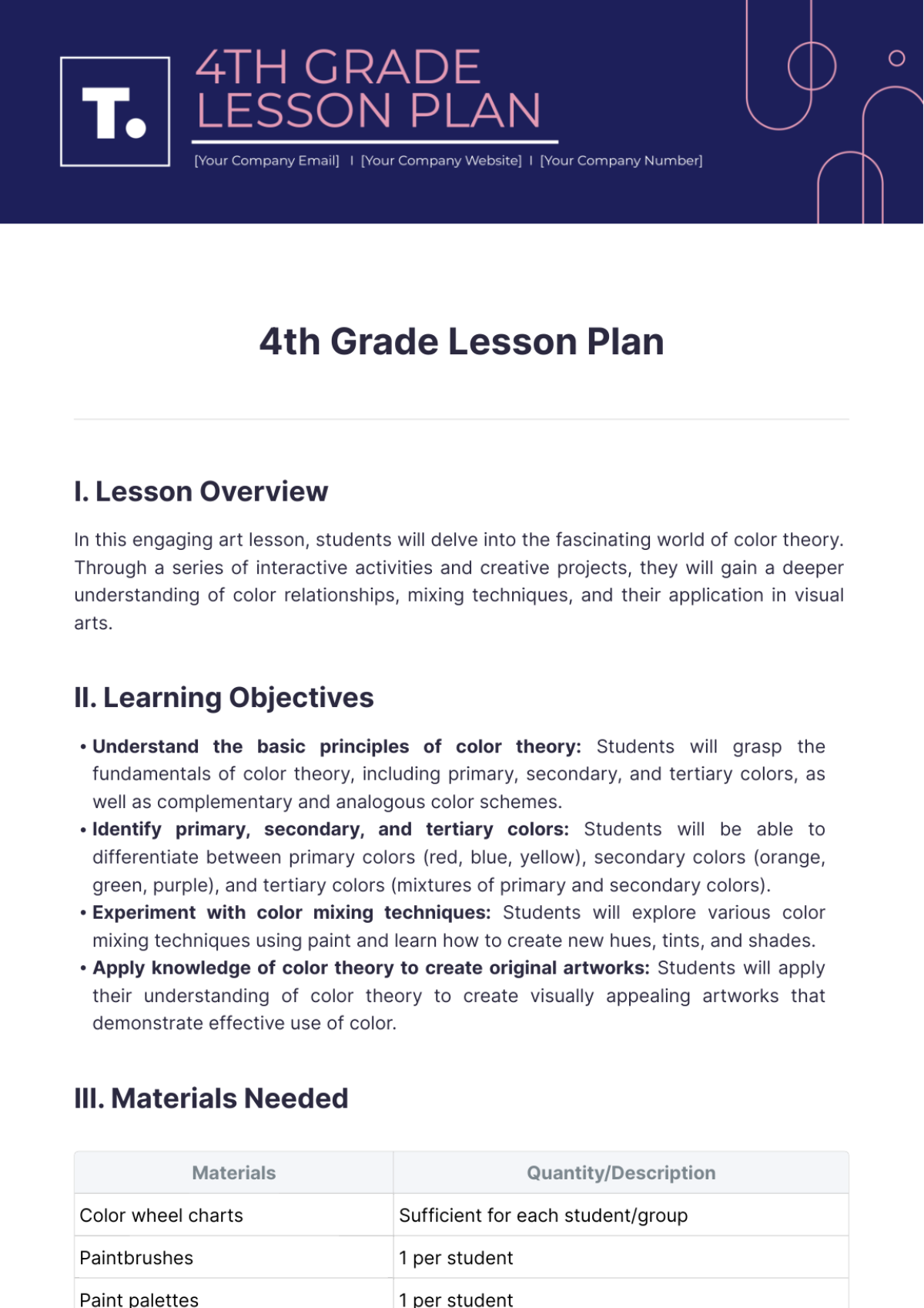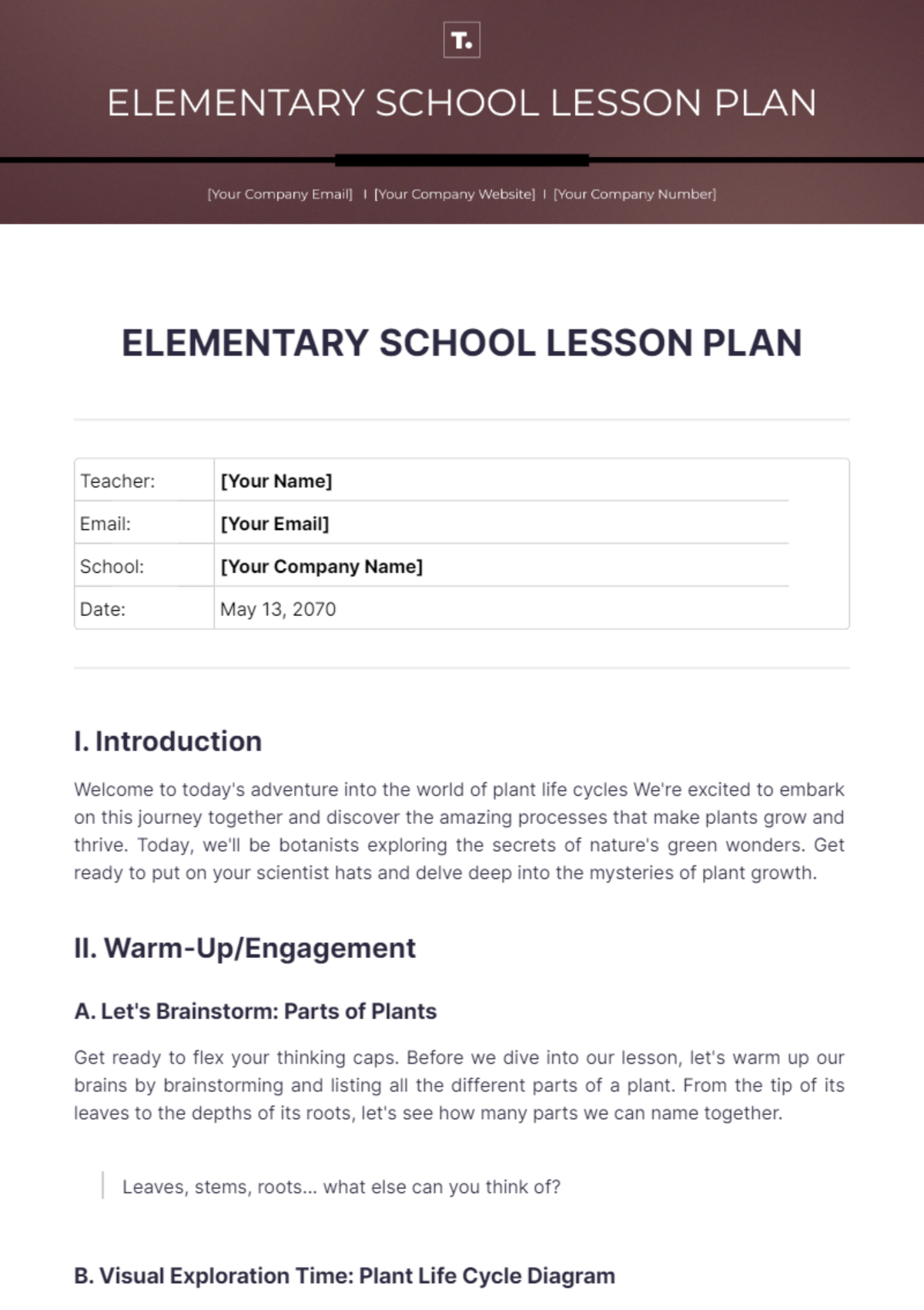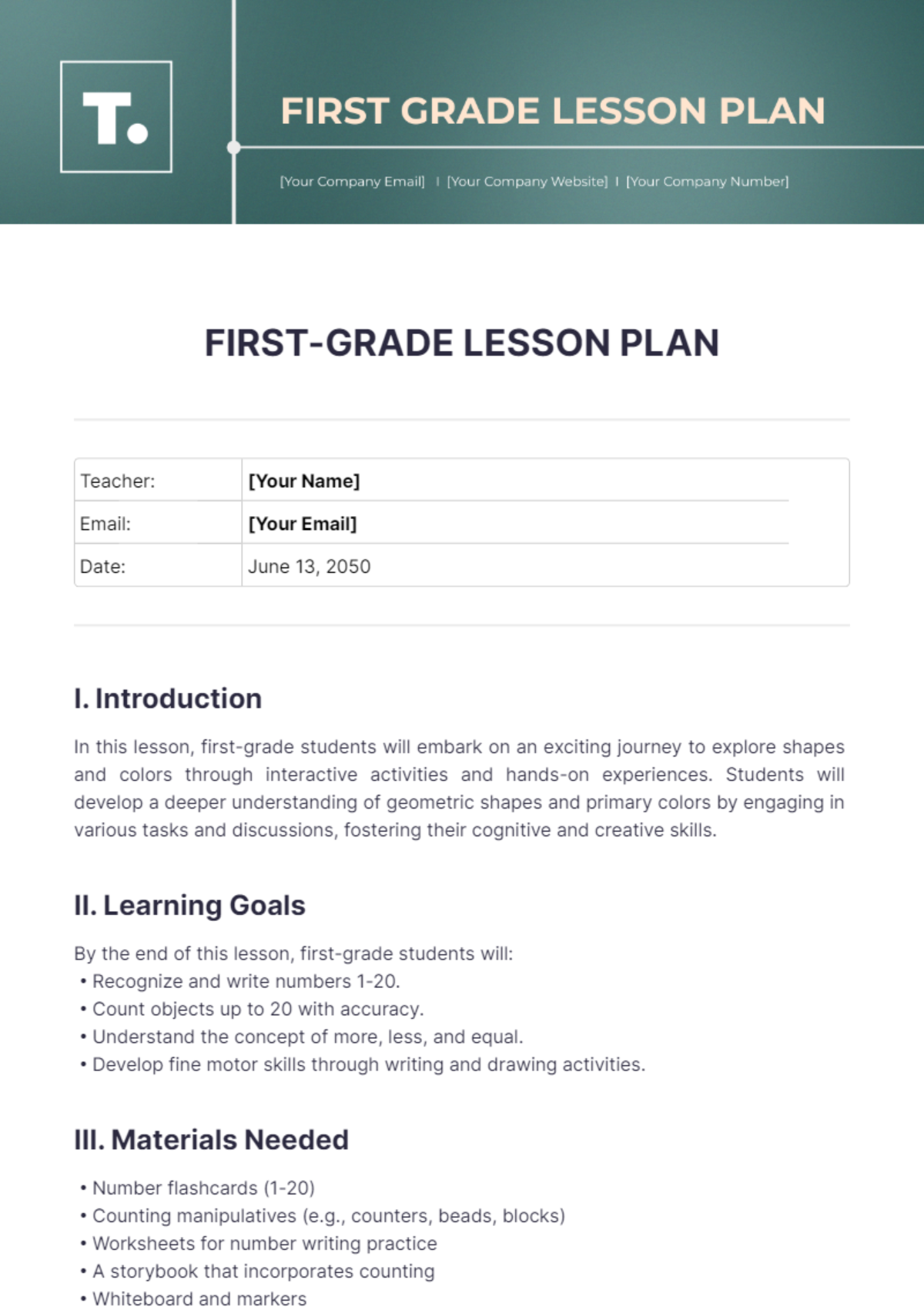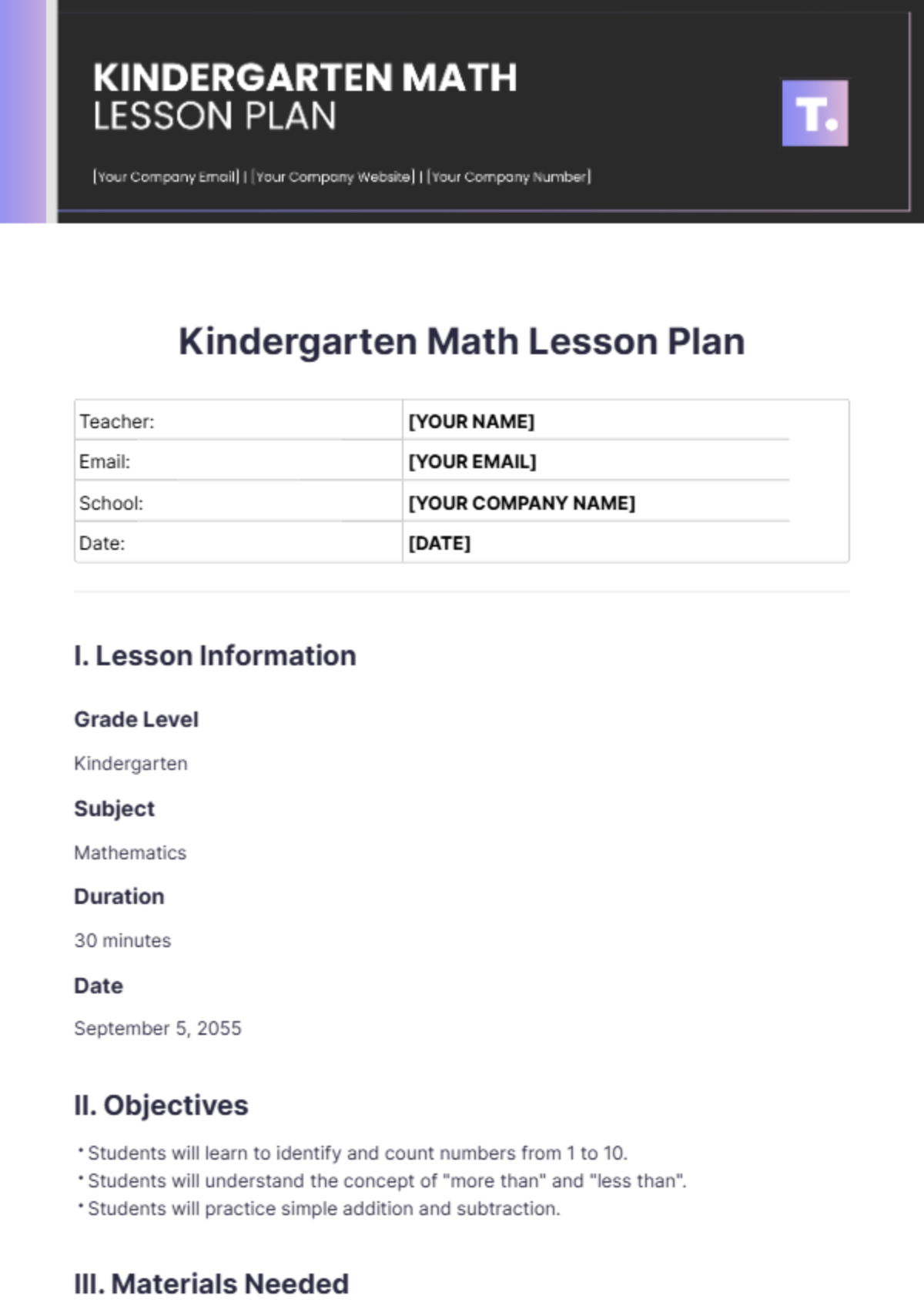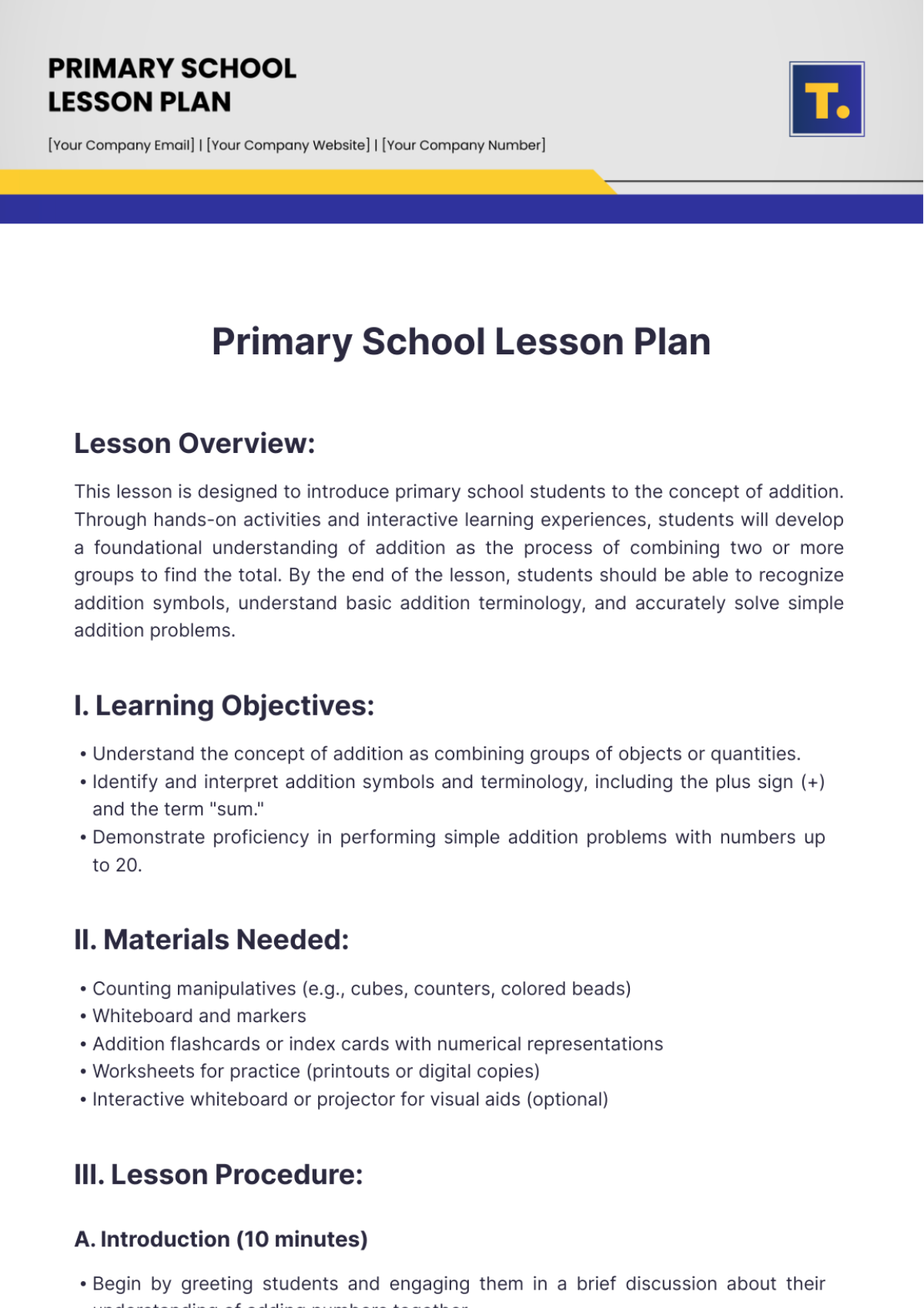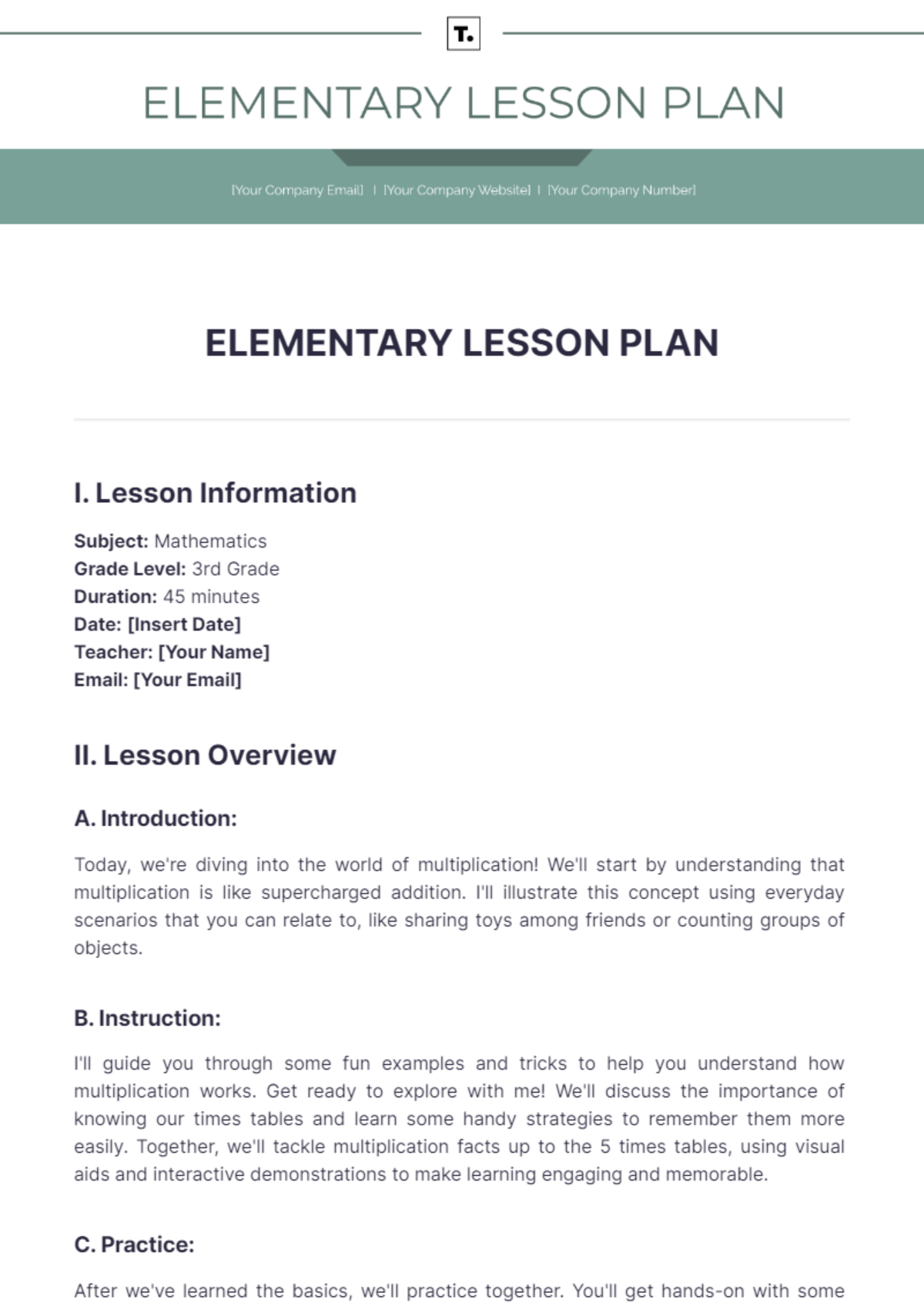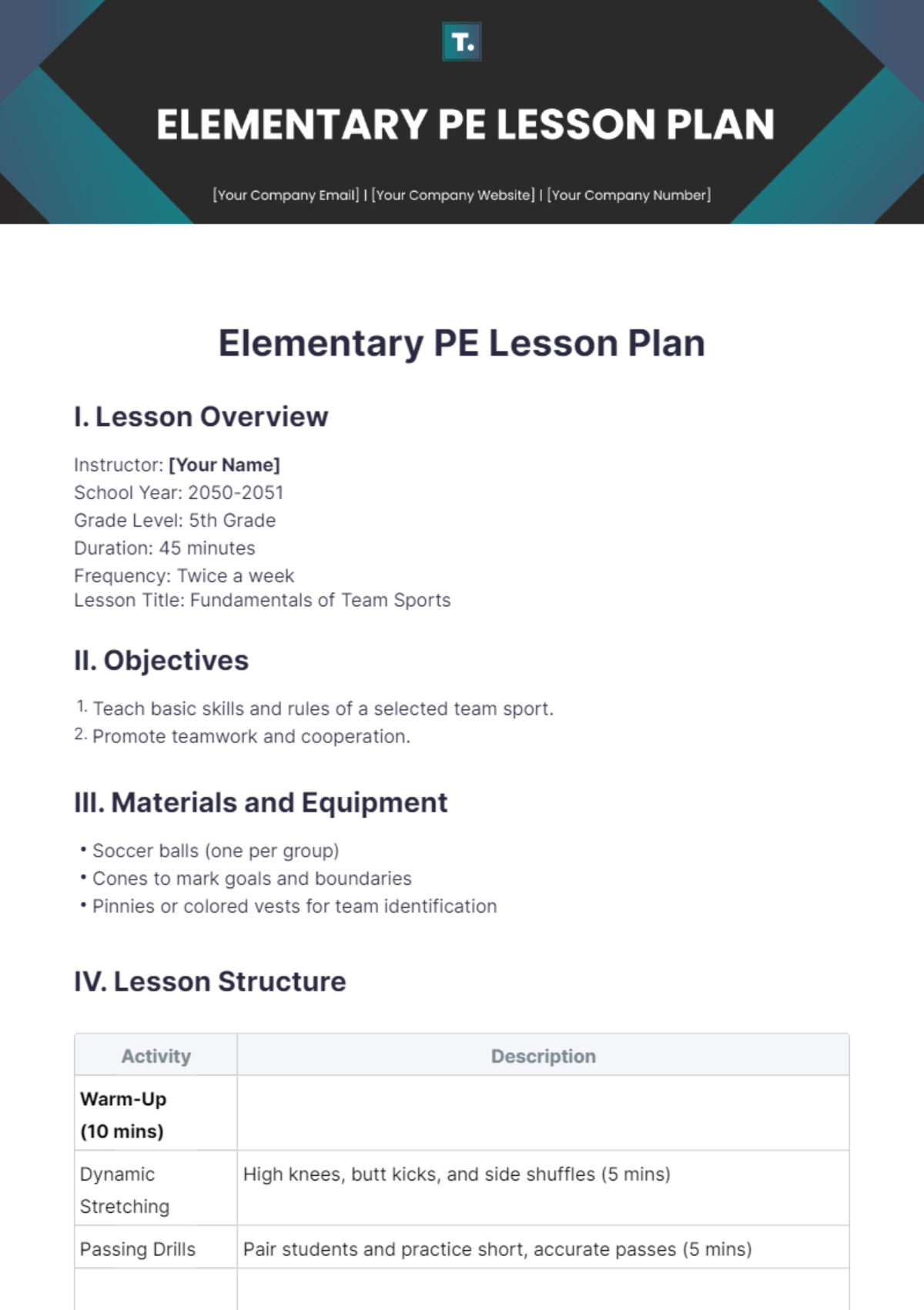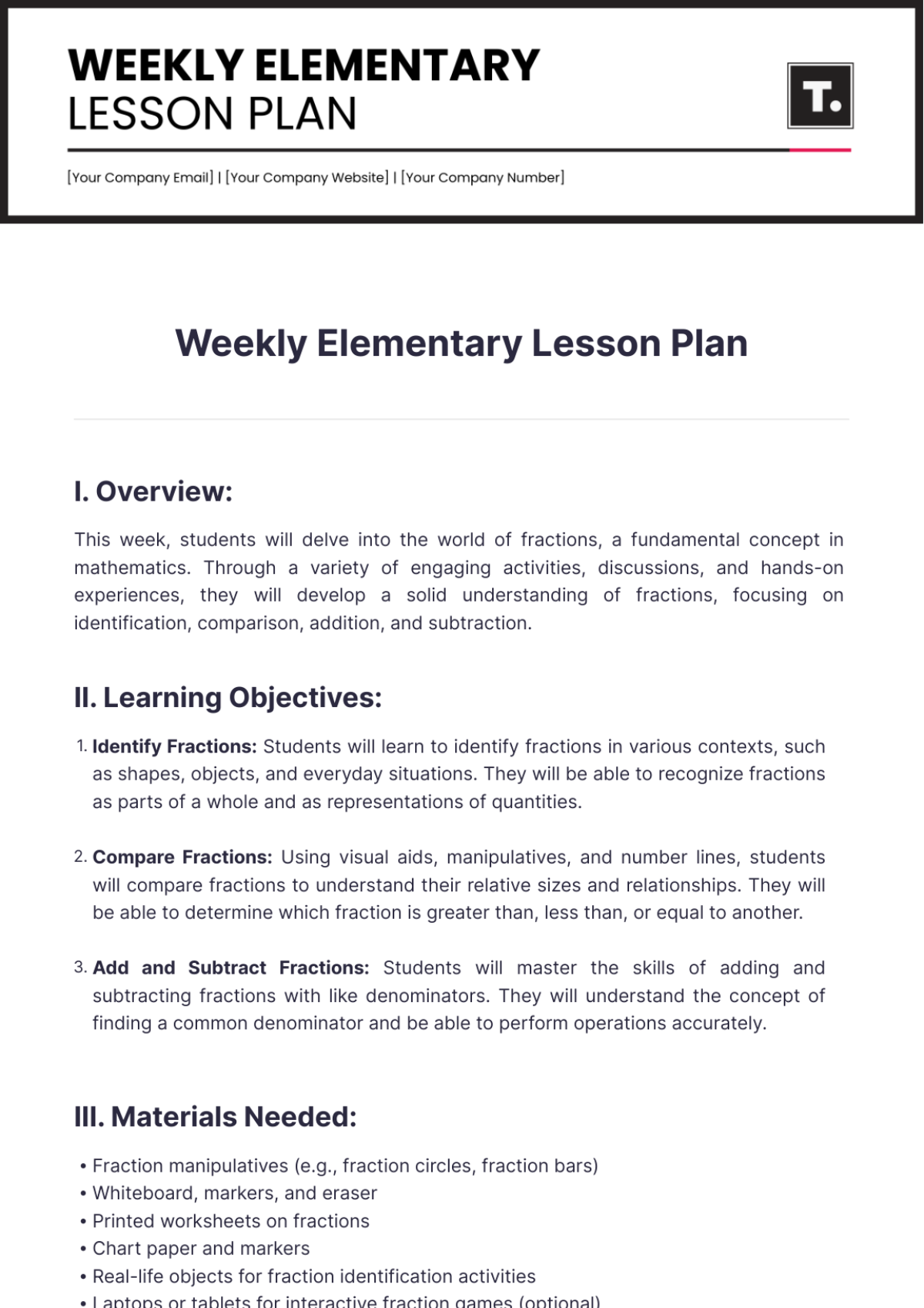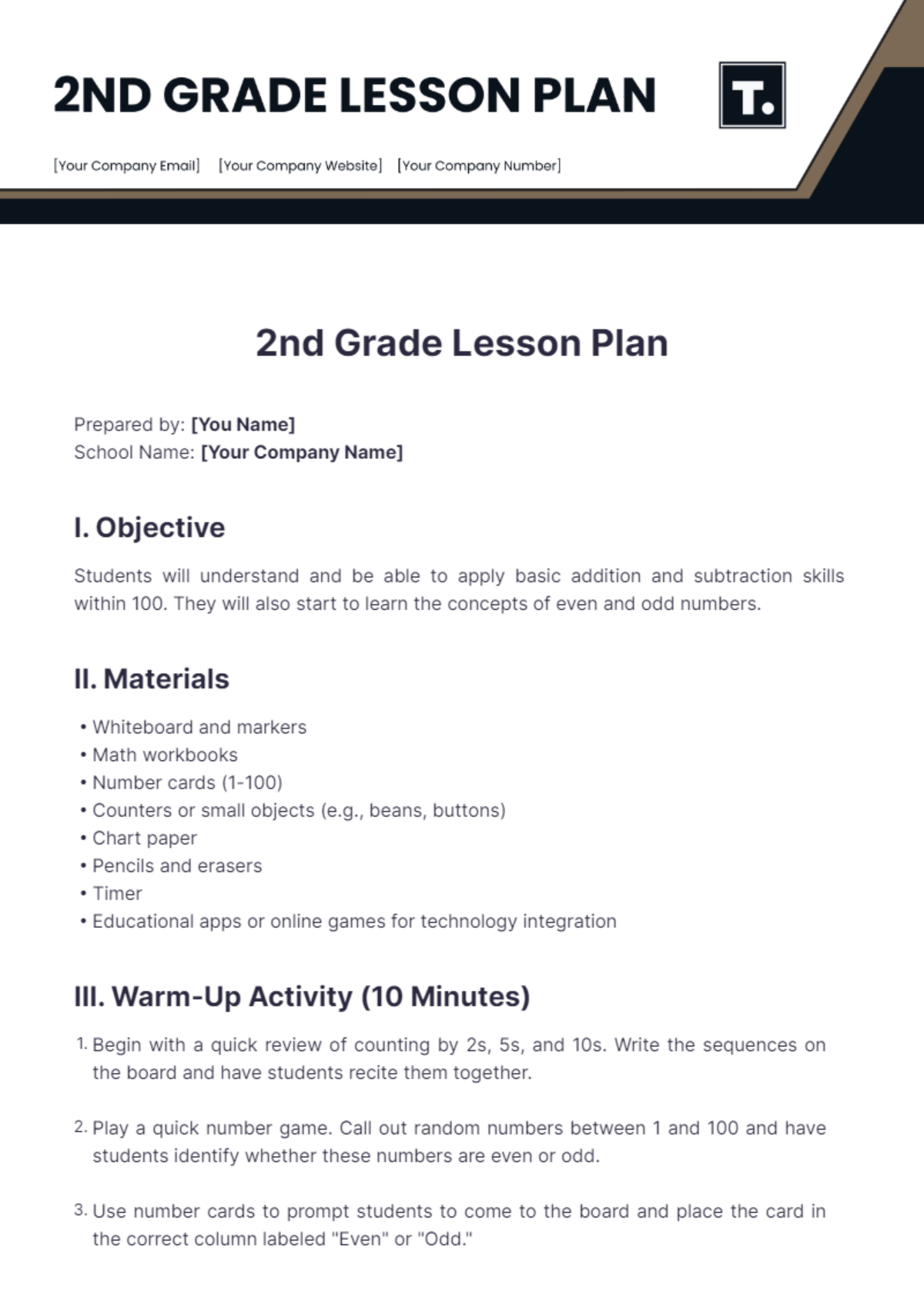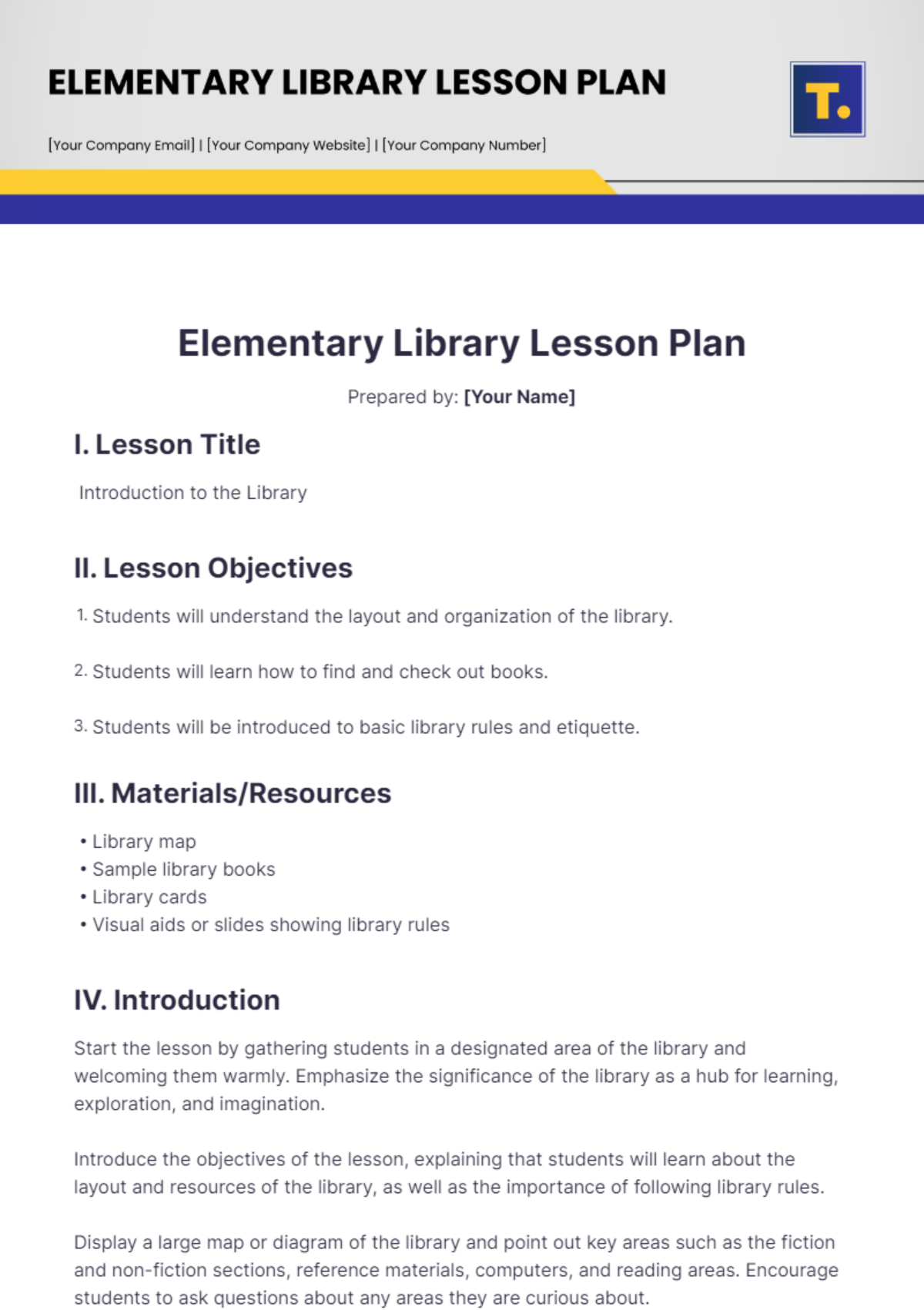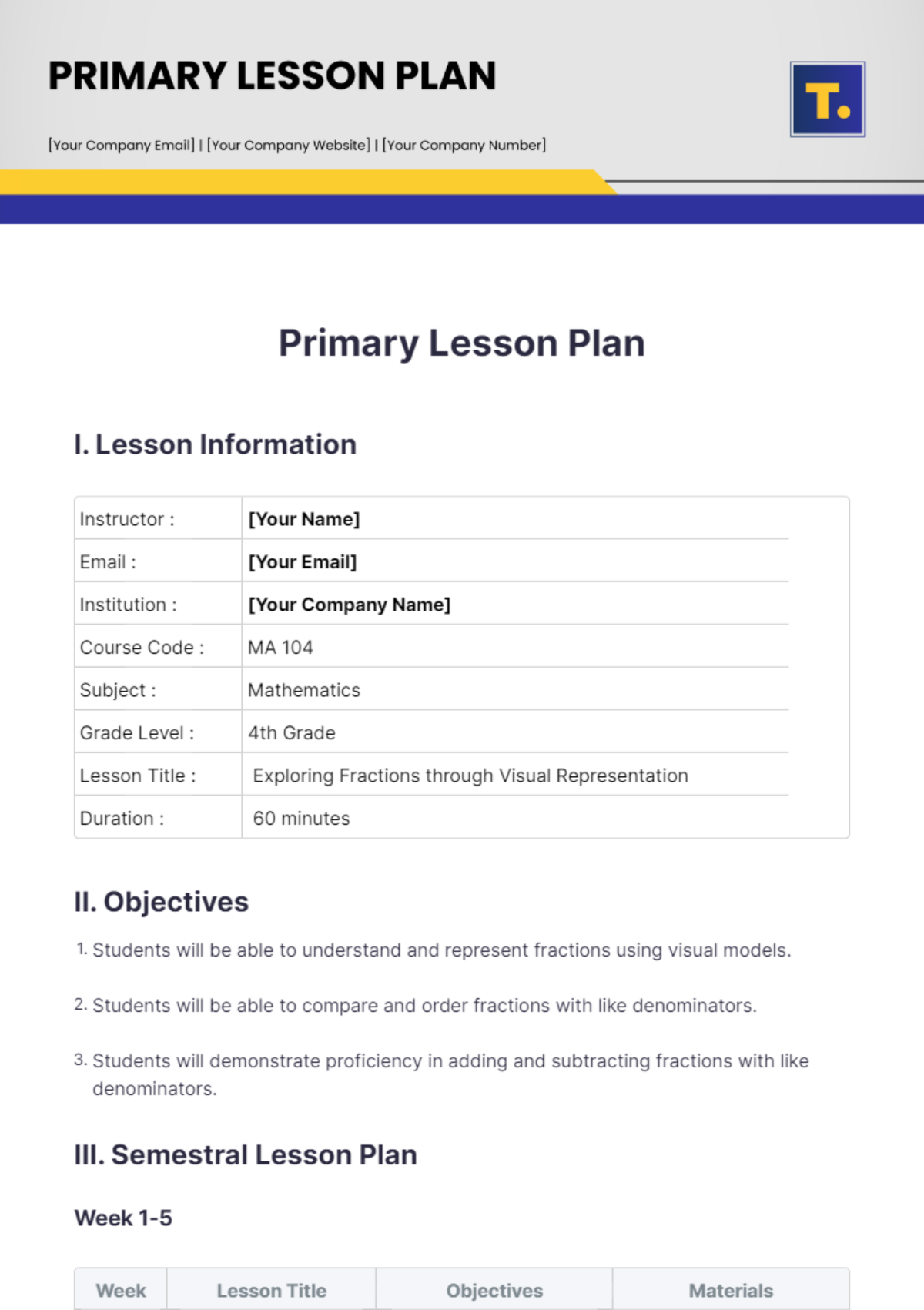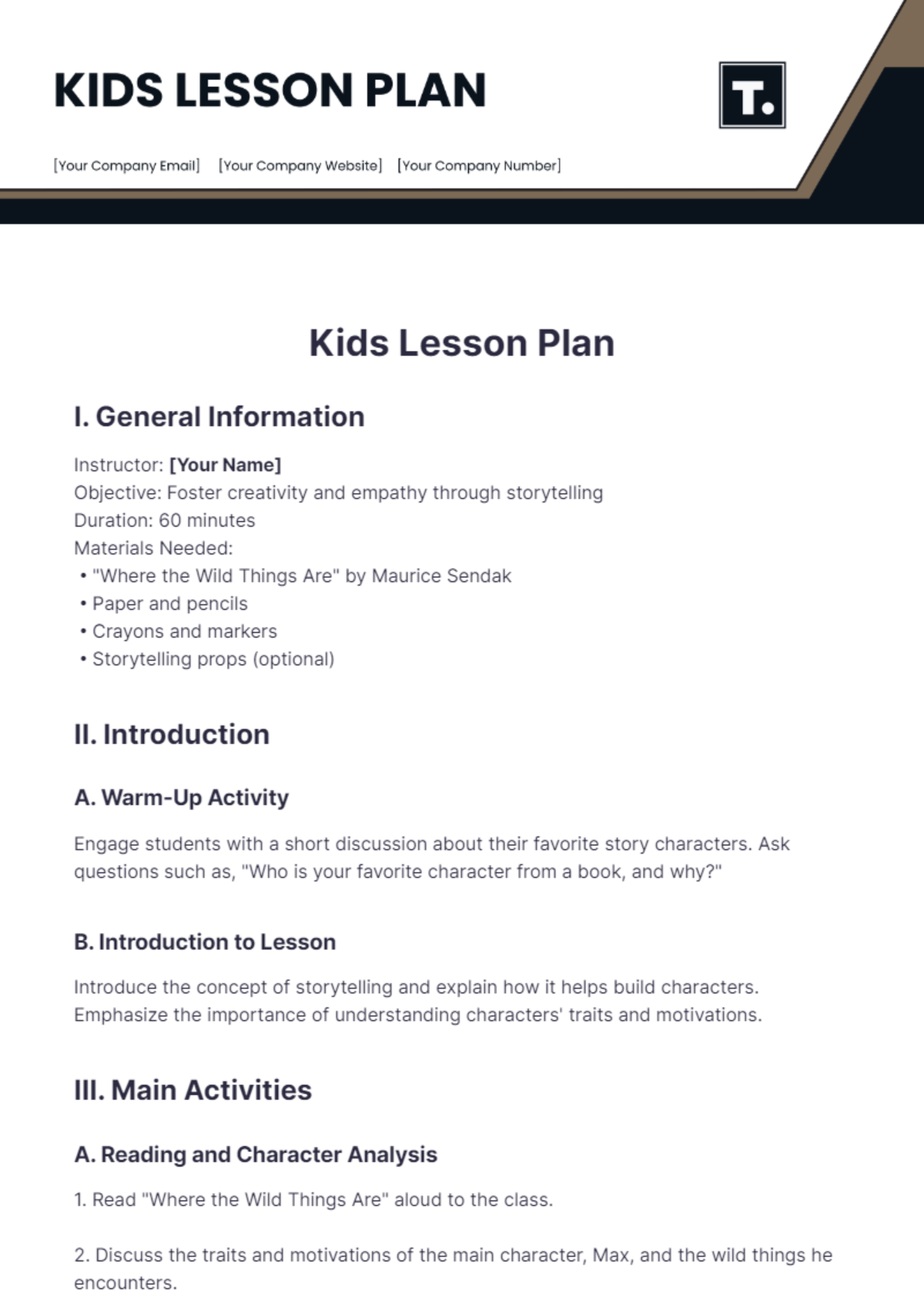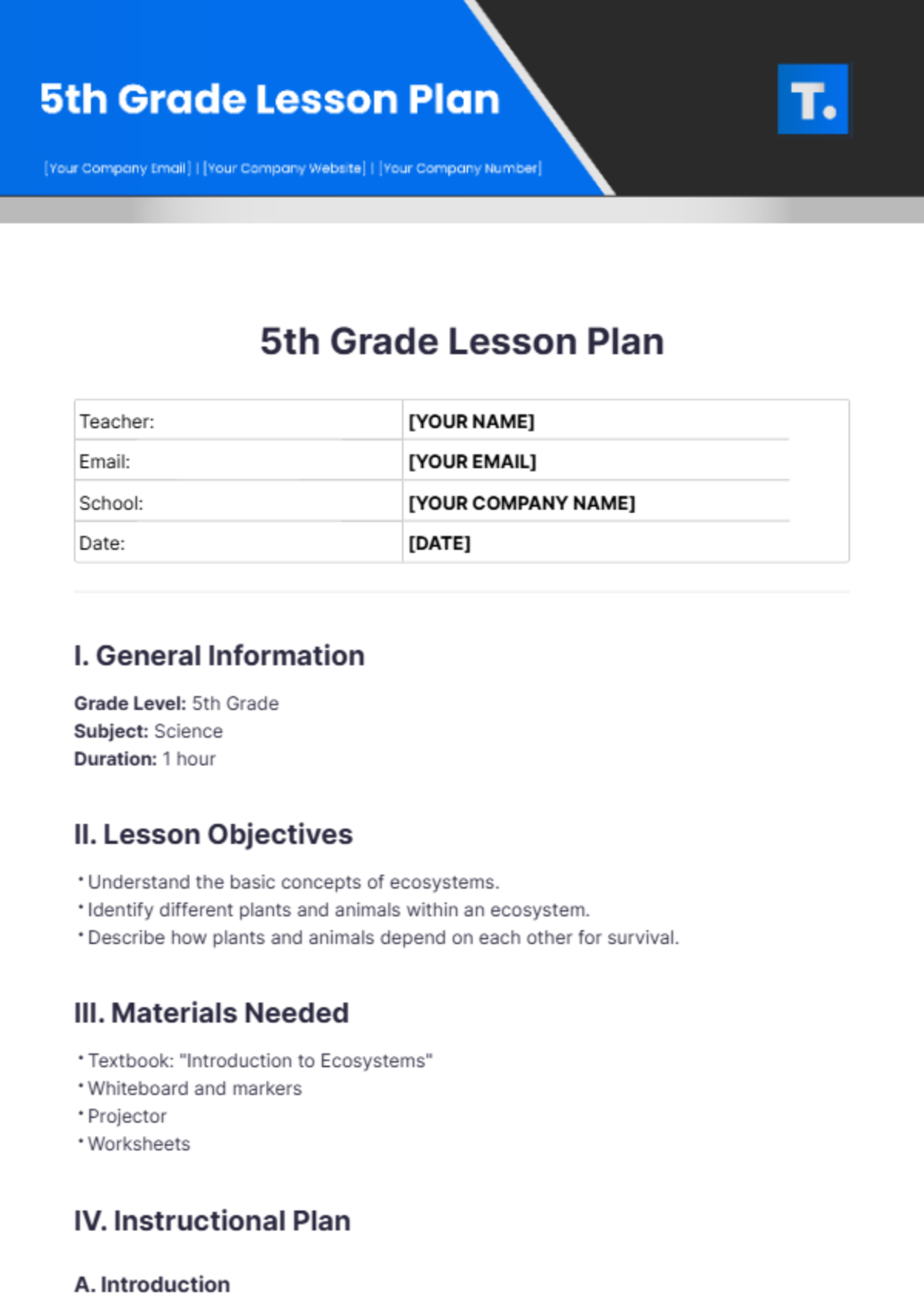Primary Lesson Plan
I. Lesson Information
Instructor : | [Your Name] |
Email : | [Your Email] |
Institution : | [Your Company Name] |
Course Code : | MA 104 |
Subject : | Mathematics |
Grade Level : | 4th Grade |
Lesson Title : | Exploring Fractions through Visual Representation |
Duration : | 60 minutes |
II. Objectives
Students will be able to understand and represent fractions using visual models.
Students will be able to compare and order fractions with like denominators.
Students will demonstrate proficiency in adding and subtracting fractions with like denominators.
III. Semestral Lesson Plan
Week 1-5
Week | Lesson Title | Objectives | Materials |
|---|---|---|---|
1 | Introduction to Fractions | Understand the concept of fractions | Whiteboard, markers, fraction manipulatives |
2 | Visual Representation of Fractions | Represent fractions using visual models | Fraction manipulatives, chart paper, colored pencils |
3 | Comparing and Ordering Fractions | Compare and order fractions with like denominators | Whiteboard, markers, fraction manipulatives |
4 | Adding Fractions with Like Denominators | Add fractions with like denominators | Fraction manipulatives, worksheets, scissors, glue |
5 | Subtracting Fractions with Like Denominators | Subtract fractions with like denominators | Fraction manipulatives, worksheets, scissors, glue |
Week 6-10
Week | Lesson Title | Objectives | Materials |
|---|---|---|---|
6 | Adding and Subtracting Mixed Numbers | Add and subtract mixed numbers with like denominators | Whiteboard, markers, fraction manipulatives |
7 | Fractions on a Number Line | Represent fractions on a number line | Whiteboard, markers, number line strips |
8 | Equivalent Fractions | Identify and create equivalent fractions | Fraction manipulatives, worksheets, scissors, glue |
9 | Adding and Subtracting Fractions with Unlike Denominators | Add and subtract fractions with unlike denominators | Fraction manipulatives, worksheets, scissors, glue |
10 | Multiplying Fractions by Whole Numbers | Multiply fractions by whole numbers | Whiteboard, markers, fraction manipulatives |
Week 11-15
Week | Lesson Title | Objectives | Materials |
|---|---|---|---|
11 | Multiplying Fractions by Fractions | Multiply fractions by fractions | Whiteboard, markers, fraction manipulatives |
12 | Dividing Fractions | Divide fractions | Whiteboard, markers, fraction manipulatives |
13 | Fraction Review and Assessment | Review all fraction concepts covered in the semester | Worksheets, fraction manipulatives, assessment materials |
14 | Real-world Applications of Fractions | Apply fraction concepts to real-world problems | Worksheets, real-world examples |
15 | Fraction Project | Create a project demonstrating understanding of fractions | Art supplies, poster boards, presentation materials |
IV. Assessment
Assessment throughout the weeks will primarily involve informal questioning and observation during class activities to gauge students' understanding of fraction concepts. Additionally, completion of worksheets and participation in group discussions will provide insight into individual student progress. Formal assessments, such as quizzes or tests, may be administered periodically to evaluate comprehension and retention of material.
V. Extension Activities
Extension activities offer opportunities for students to deepen their understanding of fractions and engage with the concepts in creative and hands-on ways. Suggestions include playing fraction-themed games, exploring real-world applications of fractions through cooking or measuring activities, and completing art projects that involve visual representations of fractions. These activities cater to diverse learning styles and interests, allowing students to reinforce their learning while having fun and fostering a deeper appreciation for mathematics.
VI. Classroom Management
Effective classroom management is essential for creating a positive learning environment where students can engage with the lesson material and interact with their peers constructively. It is important to establish clear expectations and routines to ensure smooth transitions between activities and minimize disruptions. Utilizing strategies such as a signal for attention, designated group work areas, and a system for distributing and collecting materials can help maintain organization and focus.
Additionally, incorporating cooperative learning structures and providing opportunities for student collaboration can promote teamwork and foster a supportive classroom community. Consistent reinforcement of positive behavior and proactive intervention when issues arise can contribute to a productive and inclusive learning environment where all students feel valued and respected. By implementing proactive classroom management techniques, teachers can create an atmosphere conducive to learning and maximize student engagement.
